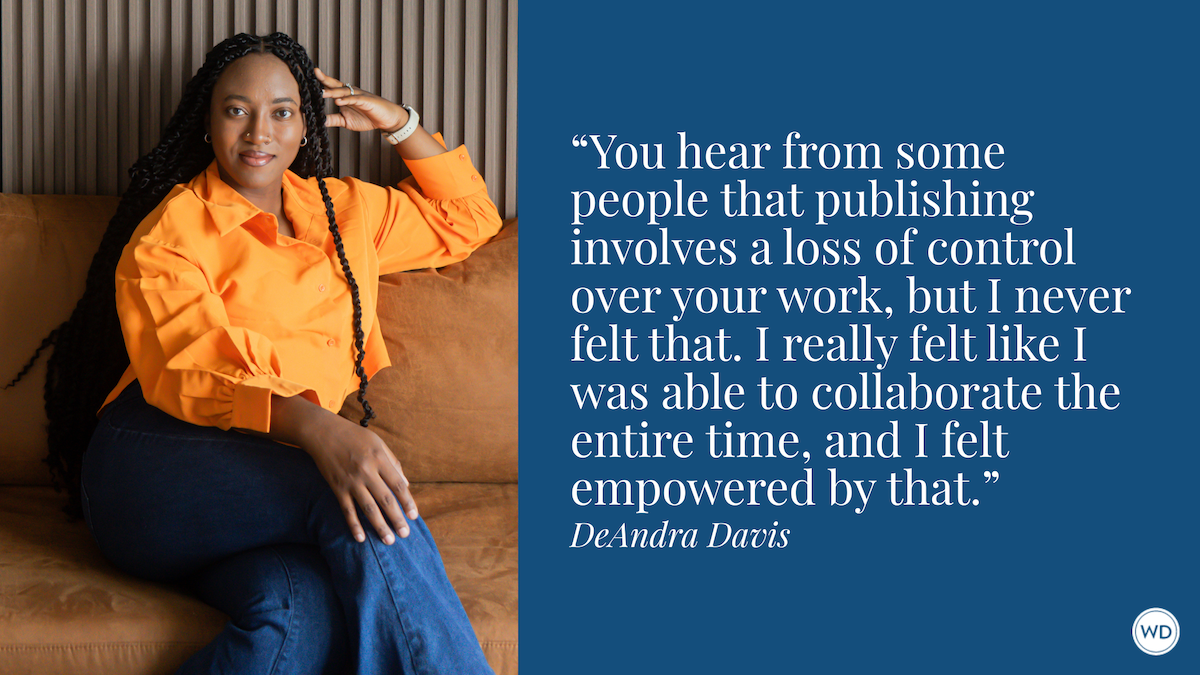Say What? 5 Fast Tips for Writing Authentic Dialogue
Award-winning and bestselling author Jenn McKinlay offers five fast tips for writing authentic dialogue that will keep your reader engaged with the right dialogue.
As a reader, authentic dialogue is critical for me. You can have an amazing plot and a brilliant theme, but if your dialogue reads like a conversation between C3PO and a Stepford wife, I am out, and your book has probably taken flight and is tongue-kissing a wall somewhere. Sorry, but I warned you. Getting dialogue just right is crucial.
Here are five tips and tricks I use to make my characters’ conversations sound like something you might overhear if you are a nosy buttinsky like me.
1. Listen to people.
I am the worst dining companion in the world because I will spend the entire meal listening to the conversations of the diners around me rather than converse with those who are with me. So rude, I know. Then I report back to my table mates, who generally roll their eyes unless it’s something really good like an argument or a breakup.
It's very important to listen to people talking in real life, not on television (scripted) or online (edited) but actual people living their daily lives. People do not speak like robots. In real conversations, there are starts and stops, ums and ahs, interruptions, swears, and slang. All of those traits need to lightly season your characters’ dialogue and give it a rhythm or flavor that engages the reader as if they're listening to a real conversation. So, listen, listen, listen.
2. Talk out loud.
I frequently have in-depth conversations with myself—out loud. I even argue both sides of an issue with me and myself ganging up on I. Sometimes I even win. When I was a kid, I had quite the alternate life of make believe happening and my brother would frequently report to my mother, “She’s talking to herself again. Weirdo.” I am convinced that I developed my ear for dialogue, much like an ear for music, by talking out loud and playing all the parts in whatever story was in my head.
When I write dialogue, yes, you guessed it, I say it out loud and then I read it out loud. If my characters are fighting, I even yell it. If the conversation is too stiff or improbable, or I suddenly start speaking in an uptight British accent, I realize I’ve veered off my conversational course and need a rewrite stat.
3. Keep your dialogue short, tight, and pithy.
No one wants to read a long winded monologue—no one—particularly if it becomes an info dump. Think about those unfortunate moments in your life when you were held hostage by a person who would NOT STOP TALKING. It’s torture, right?
I was once at a cocktail party at a writing conference and there was a fellow author who genuinely loved the sound of her own voice. She kept cornering me, talking about her books, her life, her hair, her cat, you name it, it was a one-way conversation to Boringlandia. To escape her, I downed my free champagne, held up the empty glass and said, “Time for a refill.” I had to do that three times. I still blame her for one of the worst hangovers of my life. That is what meandering dialogue feels like, a horrible hangover—and it is to be avoided at all costs.
4. If your dialogue doesn’t propel the plot or develop the characters in anyway, it should not be there.
Delete delete delete. There are no social niceties or small talk in fiction, unless you’re writing an Austenesque regency novel, and even then it had better serve a purpose, like showing how incredibly uptight the aristocracy is.
Cut out any dialogue that is extraneous. There is no discussion of the weather between characters unless it’s because a tornado is about to rip off the roof or you’re showing how socially awkward your characters are because all they can talk about is the weather. One of my rules of thumb in dialogue is if I am bored writing it, my readers will be bored reading it. If you become bored while writing dialogue, delete it and write something that doesn’t bore you.
5. Be wary of dialogue tags.
If you are adding really long descriptions when your character has a single word answer [“Yes,” he said, going to the roof and preparing to jump off because he believed he could fly], rethink it. That’s too much heavy lifting for your poor dialogue and it will throw its back out. Instead, make a new sentence.
Since we’re talking about dialogue tags, beware the repetition of “said”. When I first began writing, an author whose name I can’t remember, slammed the use of “replied”, “explained”, “retorted”, etc. He felt that “said” was good enough and readers didn’t need to be romanced with other descriptors. I took this advice to heart and used “said” as my main dialogue action verb. Enter the age of audiobooks! Let me tell you there is nothing that will pull me out of listening to a book faster than a dialogue ping pong match of “he said” “she said” ‘he said” “she said”. Mix it up; or better yet, drop the “he said” “she said” bits where you can and let the unique voice of each character carry the dialogue.
Those are my five fast tips for writing authentic dialogue. Have fun with it, remember to keep it real, and you’ve got this!
Former librarian Jenn McKinlay is the New York Times and USA Today bestselling author of the Bluff Point Romances, including Every Dog Has His Day, Barking Up the Wrong Tree, and About a Dog, as well as the Library Lover’s Mysteries, the Cupcake Bakery Mysteries, and the Hat Shop Mysteries. Jenn lives in sunny Arizona in a house that is overrun with kids, pets, and her husband’s guitars. (Photo credit: Hailey Gilman)








